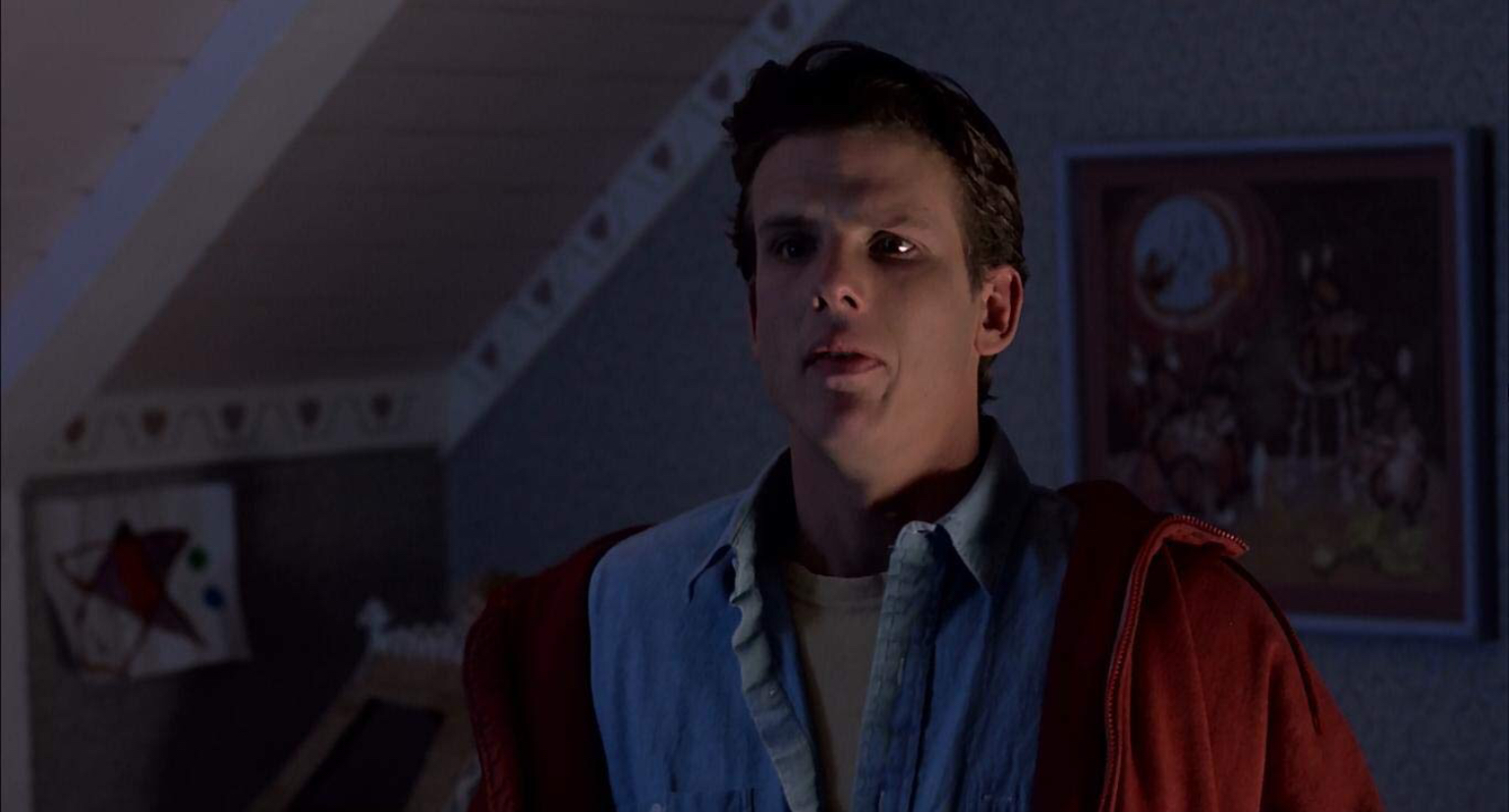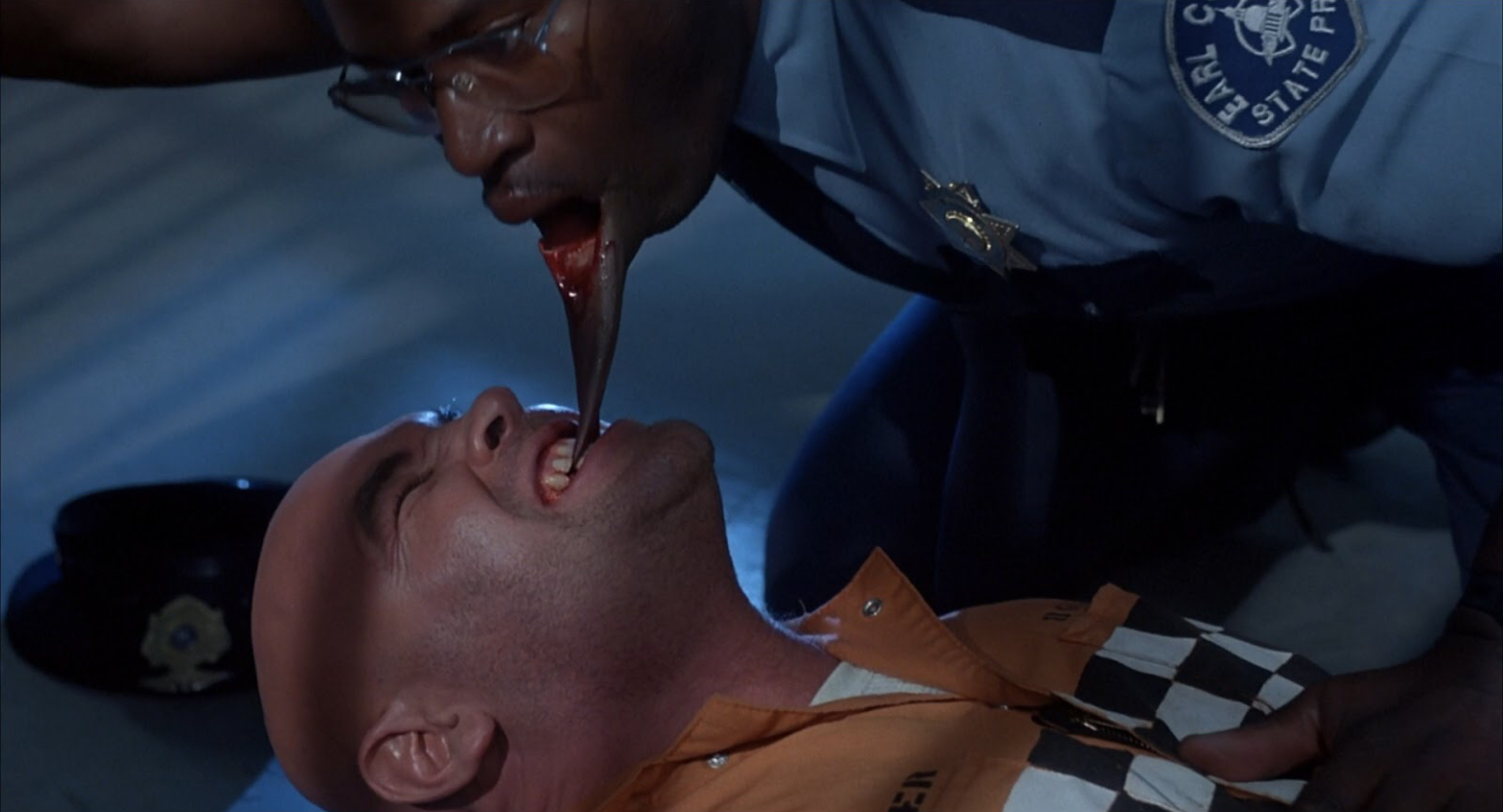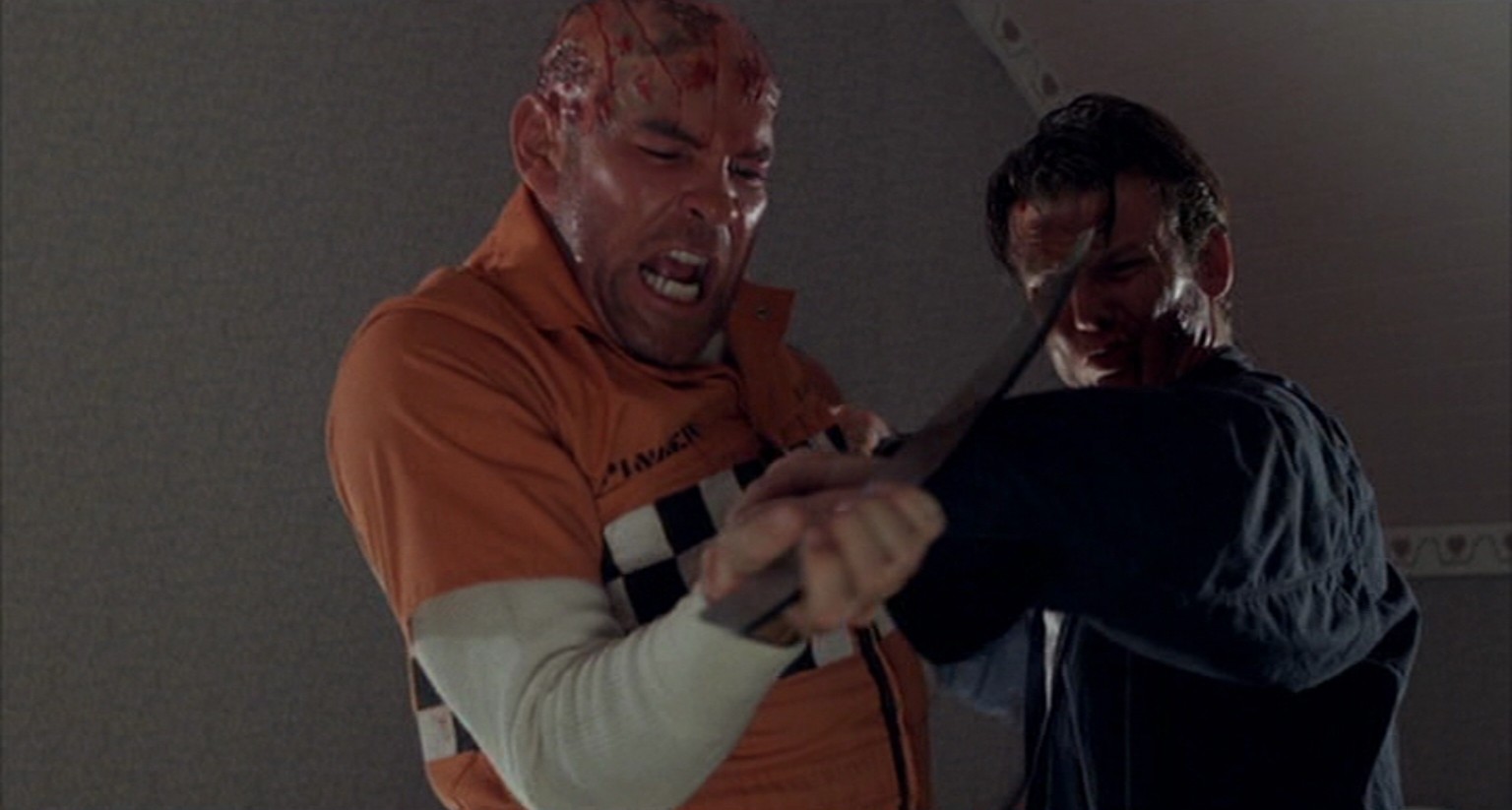Wes Craven’s Shocker (1989).
Towards the end of the 1980s, Director Wes Craven could look back at a decade which established him as one of the horror maestros of the modern age. He’d achieved both notoriety with schlockers like The Last House on the Left (1972) and The Hills Have Eyes (1977) as well as ascending to the top of the box office with A Nightmare on Elm Street. He was also starting to prove himself as a producer with A Nightmare on Elm Street 3: Dream Warriors and would continue to do so throughout the ‘90s.
The ‘80s of course saw the continued trend of blockbusters taking over Hollywood. After the first mega-successes of the 1970s, the producers and studios charged with green-lighting movies saw the opportunity to focus on films which had the potential of garnering massive box office takings. What’s more, they saw an opportunity to wrestle power away from the directors and screenwriters, and take back control themselves.

It was also the decade that saw the birth of home entertainment. Films on videocassette were now available for people to rent and enjoy in the privacy of their own homes without having to queue outside a cinema in the pouring rain. The history of cinema is packed with defining moments from the creation of sound, the effects of two world wars, the threat of television, the emergence of the teenager as a significant demographic in the 1950s and the more recent rise of Video on Demand. Home Video was just one of these.
This may explain why Craven decided that the film that would end the ‘80s for him would be a horror about a serial killer who can travel through television signals and strike at us in our bedrooms and living rooms.

Shocker (1989) is the story of a teenager, Jonathan Parker, who seems to have a strange connection with a serial killer who is terrorising the L.A. suburb in which he lives. At the start of the film, the killer, the wonderfully named Horace Pinker (Mitch Pileggi), who has already killed 30 people, murders Parker’s foster mother, brother and sister. All he has left is his foster father, Don Parker, who just happens to be a detective in charge of the investigation into the murders.
Soon Jonathan is dreaming about Pinker and the psycho is captured (but not before he kills Jonathan’s girlfriend Allison (Camille Cooper)). Pinker is (very) quickly sentenced to death by electric chair but, it turns out, he has made a deal with the devil and instead of dying, he develops the ability to travel from body to body, victim to victim by touch alone, the natural electrical charge of the human body being enough to transport his essence. Later when close to capture, Pinker discovers he can also use an electrical socket to get away, travelling through the wires that connect our homes. Quickly he progresses to TV, jumping in and out of the screens and into strangers’ living rooms.

If this premise isn’t strange enough for you, Allison’s ghost comes back, bringing with her the key to defeating Pinker, and she even develops the ability to fend off the madman by shooting a bright white ray from her abdomen. No, really!
There is a lot in Shocker which frankly does not make a lot of sense. Early in the investigation, Jonathan is allowed to enter his foster home, walking past a dozen or so ineffectual cops, only to then see his family’s mutilated bodies. Later, when the police have tracked down Pinker (by following Parker who had dreamed of the hideout), the teenager is allowed to be right there in the midst of the action, passing the police to chase the killer almost single-handedly.
If logic is something you look for in a film then you’ll probably turn Shocker off within its first half hour. But if you stay and ignore these nonsensical moments, there’s is a lot of fun to be had.

Firstly, although he lacks any semblance of nuance, Pileggi plays Pinker with a gleefulness that’s is entertaining throughout. He isn’t given much to work on with regards to character and he doesn’t have the supernatural presence of Freddy Kruger, but he is thrilling throughout, a real nasty son-of-a-bitch.
Peter Berg mostly plays Jonathan Parker straight and a bit dour throughout.There’s some humour early on to establish him as a clumsy, easily distracted and horny teenager, but after these first flourishes, there’s little room in this character’s arc for fun. This earnestness is a bit one dimensional but is what the film requires.

There’re a large number of supporting roles, from friends to victims (including A Nightmare on Elm Street star, Heather Langenkamp), the only other roles of consequence are Allison, who appears as a ghost resplendent in a long white virginal dress, and Don Parker who, in one scene, has to arrest his own foster son for murder and is later possessed by Pinker himself.
The highlight of Shocker has to be the chase scene through various TV channels and programmes. Pinker and Parker are cut into footage of war, nuclear explosions, family TV shows and the News. The special effects are fairly good, especially considering the film was made on a budget of just $5 million and some of the footage is spliced so well that it’s easy to accept that they were there all along. In the middle of this the two find themselves in the home of a woman and her family who are watching TV and eating popcorn (a nod perhaps to the home becoming a replacement for the big screen experience). The ensuing fight wrecks the home and is played for broad laughs. ‘I’ve heard of audience participation, but this is ridiculous!’ exclaims the woman.

Another highlight is the long take in the death camber as the chair is set up and the first witnesses arrive. It lasts for about a minute and a half, accompanied by Alice Cooper’s ‘No More Mr Nice Guy’, and introduces us to the casual passivity that goes into the preparation of an execution. This may seem as if the film is all over the place, with Craven not quite understanding the tone of the film he was trying to make, and in many respects this is a correct assumption. However, partly because the film is such a mess, these moments don’t seem as jarring as they might otherwise. Shocker reminds me of Tobe Hopper’s Lifeforce, another glorious mess which fails to strike a consistent tone but is still wildly entertaining.
Craven revisits a number of themes from the past most obviously the importance of and the threat of dreams. There are a number of ideas however which turned up in horror films from around the world in later years. Pinker’s ability to travel from person to person by touch is the central premise of Gregory Hoblit’s underrated Fallen (1998) which starred Denzel Washington and John Goodman. Likewise, the sight of Pinker crawling out of the TV screen brings to mind Hideo Nakata’s masterpiece Ring (also 1998). Whether this is just coincidence or if Shocker is more influential than is first obvious, is up for debate.

Ultimately, Shocker isn’t a great movie. It is, as I have indicated, a bit of a mess, however, there are some great moments in it, some fine action sequences and I did jump on more than one occasion, always the sign of an effective horror. Although Craven seems to be trying to say something about the changing nature of mass media, this does not get in the way of a good romp. Shocker is the kind of schlocky but fun horror film best experienced in a group, with the sound dialed all the way up and and copious amounts of popcorn and beer.
Film ‘89 Verdict – 6/10


